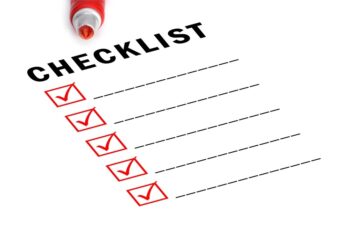Ensuring that all staff have completed mandatory training is critical for maintaining compliance and promoting a safe, effective work environment. Use this checklist to streamline the process and confirm that every team member has met their training requirements.
1. Identify Required Training Programs
- List all mandatory training required by local, state, and federal regulations (e.g., HIPAA, OSHA, CPR).
- Include any role-specific training (e.g., billing, clinical procedures).
- Verify any additional training required by your medical practice or healthcare network (e.g., cybersecurity, harassment prevention).
- Ensure ongoing or annual refresher training is scheduled as required.
2. Create a Training Schedule
- Establish training deadlines for new hires and current staff.
- Schedule recurring or renewal training (e.g., yearly HIPAA compliance).
- Set up reminders for upcoming training deadlines using an internal calendar system or HR software.
3. Maintain a Training Log
- Use a central database or HR system to track completed training.
- Record each employee’s name, training type, date completed, and certification expiry (if applicable).
- Regularly update the training log to reflect newly completed sessions.
4. Verify Completion of Training
- Ensure all staff have completed required training by reviewing the training log weekly or monthly.
- Check that training certifications or proof of completion are documented and stored in personnel files.
- Contact staff members with incomplete training to schedule makeup sessions immediately.
5. Review Training Providers
- Confirm that all external training providers are accredited and approved by regulatory bodies.
- Ensure internal trainers are qualified and equipped with the latest information and materials.
6. Ensure Role-Specific Training is Up to Date
- Confirm that clinical staff have completed necessary continuing education or specialized certifications.
- Ensure administrative and billing staff have up-to-date training on relevant policies (e.g., insurance coding, privacy regulations).
7. Audit Training Records Regularly
- Conduct internal audits of training records quarterly to ensure compliance.
- Identify any gaps in training and address them promptly.
- Prepare for any external compliance audits by ensuring all records are readily available and complete.
8. Provide Additional Support for Staff
- Offer refresher courses or extra training for staff who may need further clarification on any topic.
- Implement a feedback system for employees to report if they feel additional training is needed in specific areas.
9. Communicate Training Updates
- Regularly inform staff of any updates or changes in training requirements.
- Provide reminders before deadlines for recurring training.
10. Sign-Off for Compliance
- Once all mandatory training has been completed, review and sign off that all staff are compliant with training requirements.
- Submit a compliance report to senior management or relevant regulatory bodies if required.
